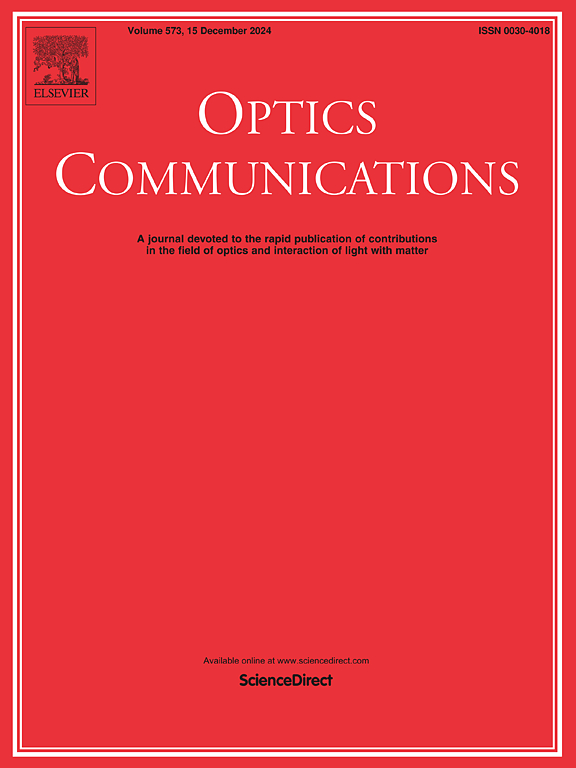基于分布式反馈光纤激光器的振动传感系统相位生成载波解调改进算法
IF 2.2
3区 物理与天体物理
Q2 OPTICS
引用次数: 0
摘要
提出了一种基于分布式反馈光纤激光器(DFB-FL)的振动传感系统,并提出了一种结合单频信息提取(SFIE)和谐波混合的改进相位生成载波(PGC)解调算法。SFIE模块从干扰信号中动态提取载波频率特征,实现三次谐波信号的实时重构,补偿载波相位延迟。随后,谐波混合过程减轻了调制深度漂移和光强扰动(LID)引起的畸变。实验结果表明,该算法在解调800 Hz振动信号时信噪比为84.24 dB,分别比SFIE-DCM和SFIE-Arctan算法高21.45 dB和11.95 dB。在连续监测60 s期间,信号噪声失真比(SINAD)的标准差为0.01856 dB,总谐波失真(THD)为0.00331%,解调信号幅值为0.00142 rad,系统的加速度灵敏度为37.8619 rad/(m/s2)@800 Hz。该算法计算效率高,易于实现,稳定性好,为光纤干涉振动传感系统的实际应用提供了可靠的信号处理解决方案。本文章由计算机程序翻译,如有差异,请以英文原文为准。
Improved phase generated carrier demodulation algorithm for vibration sensing system based on distributed feedback fiber laser
This paper presents a vibration sensing system based on distributed feedback fiber laser (DFB-FL), and proposes an improved phase generated carrier (PGC) demodulation algorithm incorporating single frequency information extraction (SFIE) and harmonic mixing. The SFIE module dynamically extracts carrier frequency features from the interference signal, thereby enabling the real-time reconstruction of three harmonic signals to compensate for carrier phase delay. Subsequently, the harmonic mixing process mitigates distortions induced by modulation depth drift and light intensity disturbance (LID). Experimental results show the signal-to-noise ratio (SNR) of the proposed algorithm is 84.24 dB when demodulating 800 Hz vibration signal, exceeding the SFIE-DCM and SFIE-Arctan algorithms by 21.45 dB and 11.95 dB, respectively. During 60 s of continuous monitoring, the standard deviations of signal-to-noise-and-distortion ratio (SINAD) is 0.01856 dB, the total harmonic distortion (THD) is 0.00331 %, and the demodulated signal amplitude is 0.00142 rad. The acceleration sensitivity of the system is 37.8619 rad/(m/s2)@800 Hz. The proposed algorithm is computationally efficient, easy to implement and stable, providing a reliable signal processing solution for practical applications in fiber optic interferometric vibration sensing systems.
求助全文
通过发布文献求助,成功后即可免费获取论文全文。
去求助
来源期刊

Optics Communications
物理-光学
CiteScore
5.10
自引率
8.30%
发文量
681
审稿时长
38 days
期刊介绍:
Optics Communications invites original and timely contributions containing new results in various fields of optics and photonics. The journal considers theoretical and experimental research in areas ranging from the fundamental properties of light to technological applications. Topics covered include classical and quantum optics, optical physics and light-matter interactions, lasers, imaging, guided-wave optics and optical information processing. Manuscripts should offer clear evidence of novelty and significance. Papers concentrating on mathematical and computational issues, with limited connection to optics, are not suitable for publication in the Journal. Similarly, small technical advances, or papers concerned only with engineering applications or issues of materials science fall outside the journal scope.
 求助内容:
求助内容: 应助结果提醒方式:
应助结果提醒方式:


